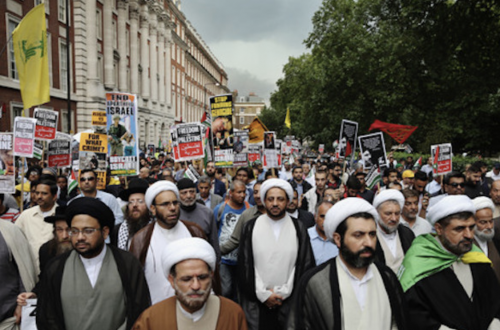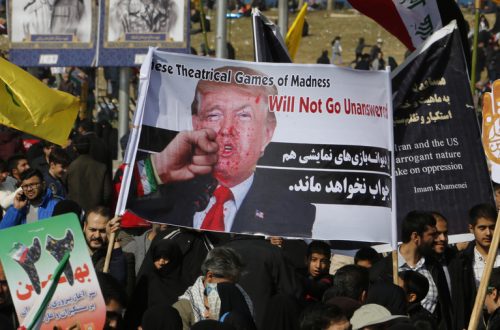Cross-Post by Aymenn Jawad Al-Tamimi from the Jerusalem Post
What drives Iran’s ambition to become the dominant power in the Middle East at the expense of the Sunni Arab Gulf states like Saudi Arabia, Bahrain and the United Arab Emirates (UAE)? Is it solely an issue of Iran’s Shi’ite Islamist ideology?
To begin with, it is worth recalling that many of the Iranian regime’s assertive and expansionist policies today predate Khomeini’s revolution and rise to power in 1979. For example, Iran’s claim to Bahrain goes back to the secular Shah Mohammed Reza Pahlavi’s resolution in November 1957, declaring the island to be Iran’s fourteenth province. Eventually, the Shah let go of Bahrain for the time being, much to the chagrin of Iranian nationalists.
Nonetheless, he seized control of the Persian Gulf islands of Abu Musa and the Tunbs in 1971. This forms the basis of Iran’s ongoing dispute with the UAE over control of the islands. Furthermore, Tehran’s current policy of providing support for armed groups in Iraq represents a continuation of the Shah’s approach towards Iran’s western neighbor.
Tensions were particularly aggravated because the Shah disliked the Arab nationalist Baathist regime amid disputes over the Shatt al-Arab waterway, and thus backed Kurdish separatists in Iraq until the Algiers Accord of 1975.
Most importantly, like the current Islamist regime, the Shah sought to acquire nuclear weapons, while publicly insisting that his nuclear program was solely for civilian purposes. As Abbas Milani-the director of Iranian studies at Stanford University- has noted, the Shah let slip his real aims when he told Le Monde in 1974 that one day, “sooner than is believed,” Iran would be “in possession of a nuclear bomb.”
Granted, the Shah did not have a habit of making hostile statements along the lines of calling for Israel to be “wiped off the map.” Of course, the Shah was no enemy of Israel, and it is undeniable that the present Iranian government’s hatred of the Jewish state is religious in nature.
He also had cordial ties with Saudi Arabia in so far as both were against Nasser’s pan-Arab nationalist Egypt. Yet the Shah’s obsession with military spending lies about the country’s nuclear program, as well as the aggression against the UAE and Iraq, demonstrate that regional hegemony was certainly on his agenda.
The excessive military expenditure ostensibly served as a deterrent against the Soviet Union, but that was a mere pretext since the United States was more than capable of protecting the Shah’s regime against Moscow’s designs.
So what is the source of the continuity between Iran’s policies now and those of the Shah? It is notable that, like the Islamists, the Shah hated Arab nationalism. Is the underlying factor therefore an Arab-Persian ethnic rivalry?
A recent interview by al-Arabiya with prominent Iranian intellectual Sadek Zibakalam- closely linked to former Iranian President Akbar Hashemi Rafsanjani- would appear to support this thesis.
According to Zibakalam, ‘The phenomenon of hating Arabs is very common among intellectuals…Whenever Iran issues any fiery statement about our neighbors…you can easily detect that they revolve around a belief that Persians are superior.’
He added that “Iranians’ constant attacks on Sunnis stem from their hatred of the Arabs,” that the animosity extends partially to some non-Persian groups in Iran like the Lur and Baloch, and that these attitudes are firmly ingrained both at the level of government and the public.
Indeed, the belief in Persian superiority by virtue of being racial Aryans is not something to be taken lightly. The Pahlavi dynasty that preceded the 1979 Revolution featured “Aryamehr” as one of the Shah’s titles, meaning “Light of the Aryans.” As for the link between anti-Sunni and anti-Arab sentiment, it is notable how many pan-Iranist and Iranian nationalist factions such as SUMKA and the Aryan League view Shi’ism in Iran as a form of “Aryanized Islam.”
More recently, confirming Zibakalam’s analysis is an article written by Ayatollah Mohammed Kharrazi, the head of the Hezbullah-Iran organization and an elite member of the current regime. Published on the Hezbullah-Iran’s website (translation courtesy of MEMRI), the piece did not attract any condemnation from other leading members of the government.
Arguably, Kharrazi’s most egregious claim is that the Qur’an was revealed in Arabic so that the Arabs, “the greatest infidels and hypocrites,” could know the book’s wonders “in the poorest of the world’s languages,” in stark contrast to Persian, which is supposedly “the most superior language of the dwellers of Paradise.”
Kharrazi goes on to call for the subjugation of the Arabs and other ethnic groups (e.g. the Lur* and Baloch, who feature higher up the racial hierarchy than Arabs) between Israel and Afghanistan under an Islamist Greater Iran, the true “homeland of Islam.”
In short, the continuing tensions between Iran and the Gulf Arab states in particular are at least in part the product of traditional Arab-Persian racial animosity, predating the rise of the Islamist regime.
Thus, even with regime change and an end to an Iranian existential threat to Israel, the nation will still strive to shift the balance of regional power and influence in the Middle East away from Saudi Arabia, provided there is no common enemy to fight, and will likely continue its nuclear program to achieve this goal.
* The Lur have faced considerable discrimination since the days of the Pahlavi dynasty. For an overview of the treatment of Lur under the Pahlavi dynasty see this article.


